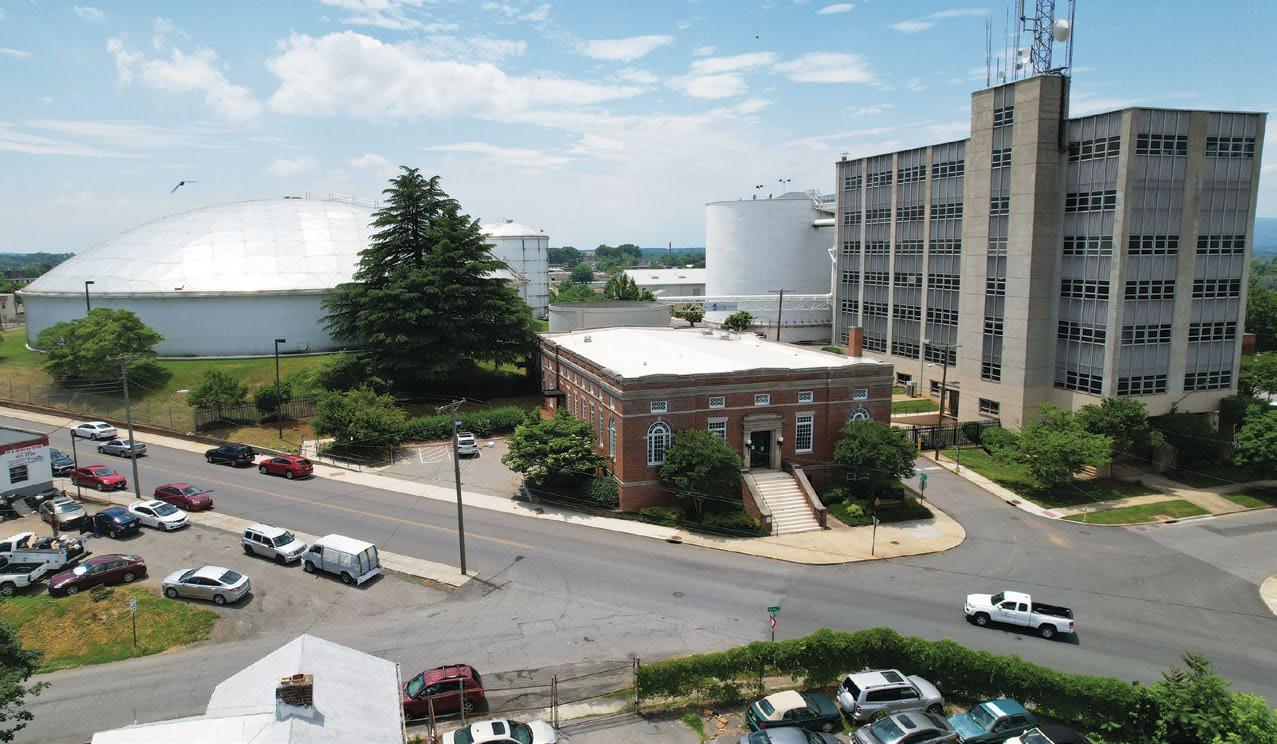Clean Water. Clear Streams. Thriving Community.


Clean Water. Clear Streams. Thriving Community.


2024 ANNUAL REPORT

Timothy Mitchell, P.E. - Director
Mitchell has served as director of Lynchburg Water Resources since 2004.
We are pleased to present our FY 2024 Annual Report. This report provides an overview of some of Lynchburg Water Resources’ FY 2024 accomplishments and key projects, and also highlights some of our exceptional staff.
Here at Water Resources, ensuring that we provide clean, safe drinking water is our top priority. Our quality drinking water starts with our primary water source, the Pedlar Reservoir. Nestled in the Blue Ridge Mountains, Pedlar’s watershed lies almost entirely within a National Forest, resulting in exceptional source water. From source to tap, our team works tirelessly 24 hours a day to ensure that your drinking water far exceeds all State and Federal drinking water standards.
Protecting and cleaning up our streams is also important to the quality of life in Lynchburg. For the past four decades, we have aggressively been working on our Combined Sewer Overflow (CSO) Program. This past year, we embarked on our most ambitious project ever. The $105 million Blackwater CSO Tunnel, or LYHBeyond, is the capstone of our CSO Program, which
has eliminated millions of gallons of raw sewage and stormwater from being discharged into our cherished waterways each year. Our highly trained staff at the Water Resource Recovery Facility treats the region’s wastewater to very high standards, removing pollutants, and returning the water to the James River cleaner than the river itself. This, in conjunction with our Stormwater Program, not only protects our waterways but also achieves significant water quality improvements, enhancing the environment and our quality of life.
Partnering with our community is essential to achieving our goals. Our education and outreach efforts reach thousands of residents and students every year, educating them on the importance of safe drinking water and protecting our environment. Working together, we can achieve our vision of: Clean Water. Clear Streams. Thriving Community.

We are committed every day to providing our citizens with an uninterrupted supply of clean and safe drinking water and delivering reliable sewer service and stormwater management so our waterways are clear and our community thrives.
2024 ANNUAL REPORT
For the 19th consecutive year, the City of Lynchburg was recognized for its excellent water quality, delivering drinking water to its citizens that is three times cleaner than federal and state standards.
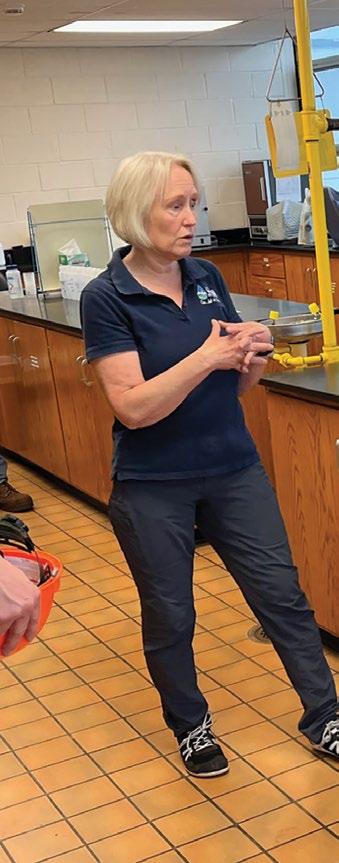
In FY 2024, the City of Lynchburg continued to deliver to its citizens drinking water that far exceeds federal and state standards for safety and quality. Published in April 2024 and distributed by mail to every customer, the annual Water Quality Report highlighted the results of water sampling from 2023, which showed that the water delivered to more than 100,000 citizens in Lynchburg and surrounding communities complies with all regulations governing water quality. Here are some other highlights from FY 2024:
— The U.S. Forest Service, in partnership with Lynchburg Water Resources and other groups, announced a $2 million ecological investment to improve water quality in the Pedlar River and Pedlar
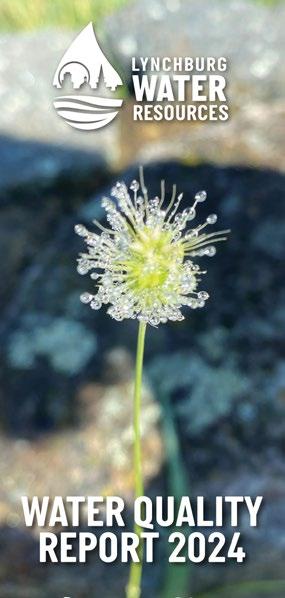

Reservoir, which serves as Lynchburg’s main water source. The effort, already underway, includes wetland restoration, prescribed burns, invasive species controls, tree plantings, and augmentation of James River Spinymussel populations.
ABOVE: Chemist Leslie Morris explains LWR’s sampling processes to City leaders in April 2024.
LEFT: The Pedlar River Watershed Restoration effort was launched with a gathering of U.S. Forest Service officials, LWR staff, and others, at the Pedlar Reservoir on June 12, 2024.
— LWR continued its work to identify the material of water service lines in the water distribution system in compliance with the EPA’s Lead & Copper Rule Revisions. For more info on this program, visit www.lynchburgva. gov/waterserviceline.
The City of Lynchburg’s drinking water was found to exceed all federal and state standards for safety and water quality. The 2024 Water Quality Report was published in April and reveals water testing results from the previous year. Click here to see the full report online.

College Hill Water Treatment Plant
2023 Gold — Performance Award for Excellence in Clarification, Filtration, Backwash

EMPLOYEE SPOTLIGHT
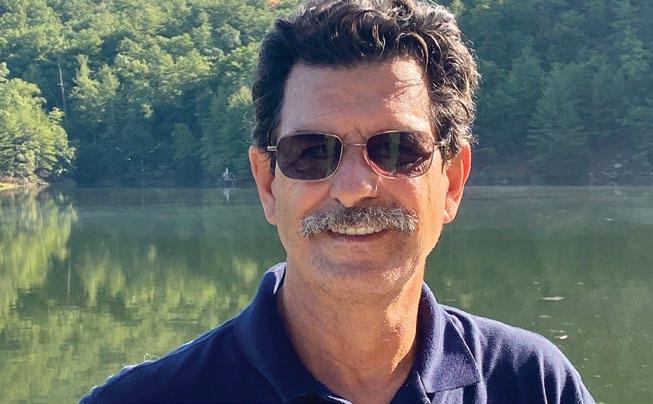
Mike White
PEDLAR RESERVOIR CARETAKER
Mike watches over the Pedlar Reservoir and dam, prepares the water for its 21-mile journey to Lynchburg, greets fishing guests, and more.
“I’m glad to be a part of the team that brings some of the best drinking water to the citizens of Lynchburg. I enjoy the responsibility of taking care of the reservoir. I also have the best office views in the city.”
FY 2024 DATA DROP
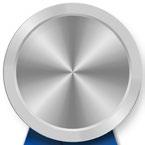
Abert Water Treatment Plant
2023 Silver — Performance Award for Excellence in Filtration, Backwash

24/7
3.9 billion Gallons of water treated to drinking water standards
LWR’s water treatment plants are staffed by water operators 24/7 to ensure the delivery of clean and safe drinking water. Here, Brien Caulfield (left) and Tom Viall conduct tests at various points of the treatment process during their evening shift.
130,000+
Number of laboratory water quality tests completed

Water Resource Recovery Facility 2023 NACWA Gold Peak Performance Award
Treating the region’s waste requires complex processes, 24/7 operations, and a well-trained, committed workforce.
The Water Resource Recovery Facility (WRRF), located on Concord Turnpike, employs 34 full-time employees in the operation and maintenance of the wastewater treatment process. In addition to wastewater that reaches the facility through the sewer system, the WRRF also receives truck-hauled waste, pumped septic system waste from residents, food truck wastes, and Recreational Vehicle (RV) waste. The WRRF collects Fats, Oils, and Grease (FOG) at several drop-off locations and at the treatment facility. This ensures proper treatment of the materials that could be harmful to the environment or our collections systems.
The City continually strives to improve through projects designed to eliminate or reduce the
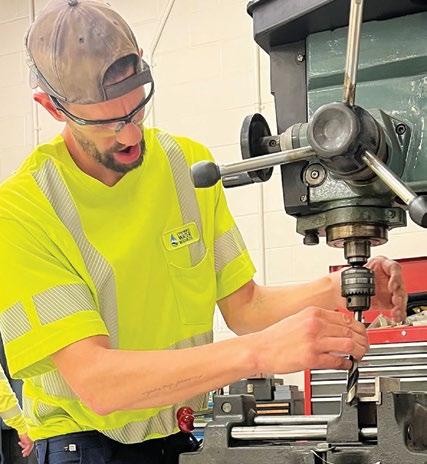
4.4 billion Gallons of wastewater treated in FY 2024
amount of Combined Sewer Overflow (CSO) releases to the James River. A 4-million-gallon tank completed in 2021 allows operators to manage flows during rain events, helping our Biological Nutrient Reduction (BNR) process. The complex BNR process enhances microorganisms’ ability to reduce nitrogen and phosphorus discharges to the James River, and ultimately to the Chesapeake Bay.
The WRRF routinely hires interns to shadow staff for a real-world experience in the lab and in operations. This program offers potential employees an opportunity to see what we do on a daily basis. This commitment to bringing new people into our industry will help to ensure the WRRF operates at a high standard for generations to come.

Elizabeth Jensen ASSISTANT SUPERINTENDENT, WRRF
Elizabeth works behind the scenes at the WRRF to keep projects on track and the plant’s permits in compliance.
“When I was a kid, I wanted to clean up the environment and save the planet. I may not be saving the whole planet, but working at the WRRF lets me help keep this part of the James River clean.”
25,000
Wet tons of solids removed during treatment process


24/7
WRRF Plant Operator Scott Pickrel monitors the flow of wastewater coming into the plant and how much treated water is being discharged into the James River. Operators staff the plant 24/7, providing continuous treatment of the region’s wastewater. This includes domestic and industrial waste from Lynchburg and portions of Amherst, Bedford, and Campbell counties.

Addison Spinner, assistant shift supervisor at the WRRF, explains to City leaders how the aeration basins help clean the city’s wastewater. In FY 2024, the basins were drained and cleaned.

Jacquelyn Austin, lab manager at the WRRF, leads a small team that runs more than 30,000 tests each year and manages several programs to comply with complex regulations governing wastewater treatment — pretreatment, truck hauled waste, FOG (fats, oils, and grease), and more.

The city’s wastewater only gets to the WRRF if the 455 miles of sewer lines are in good condition and clear of blockages. Civil Engineer Stephen St. Angelo, P.E., oversees LWR’s contracted sewer maintenance work that includes surveys, lining, and root control.
2024 ANNUAL REPORT
LWR’s Stormwater team is in the community every day with a focus on clear streams, healthy environment.
“Stormwater” is more than just the rain that falls on Lynchburg ... it’s BMPs, storm drains, inlets, outfalls, and a team that manages it all. It’s also the work that happens between rain events, when that team evaluates how our systems held up and what’s needed to prepare for future storms.
The goal of LWR’s Stormwater program is to protect Lynchburg’s waterways by managing what enters our storm system so that only rain water is discharging into our streams and the James River. The James River is only as healthy as what discharges into it, which is why our division’s motto is “Only Rain Down the Drain. Only Rain to the James.”
Best Management Practices (BMPs), which are the facilities we maintain to keep pollution out of our waterways, help capture and filter stormwater
runoff from impervious surfaces. Our team’s inspections of these 900+ BMPs are crucial to their long-term function and success.
Maintenance of the stormwater system by our collections team through CCTV monitoring and cleaning helps to ensure the system, consisting of 6,900 stormwater inlets and 183 miles of stormwater pipes, is available to take runoff during heavier storms, preventing backups and overflows.
The City of Lynchburg is guided by a Phase II MS4 General Permit that addresses non-stormwater discharges into the system and how to prevent them. The permit also includes outreach opportunities that we use to educate citizens about what they can do to help protect Lynchburg’s waterways and improve our community’s water quality.

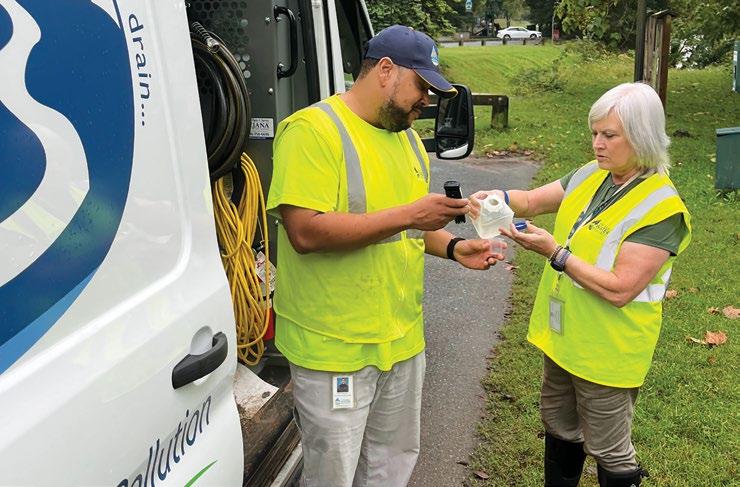


The City of Lynchburg’s MS4 Program Plan, updated in FY 2024, is a roadmap for how we plan to meet permit requirements. It lays out the metrics of what we track and report to the state each year. Click
plan online.
16,925
Number of stormwater inlets cleaned
769
Number of public and private BMPs inspected 2.5+
Tons of material removed from storm lines

EMPLOYEE SPOTLIGHT
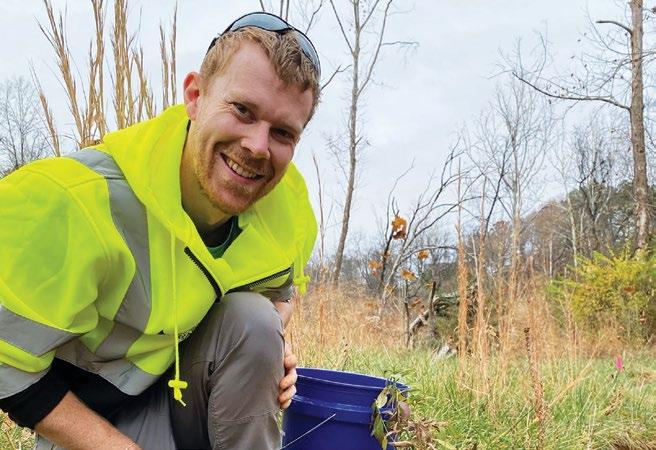
Michael Daniel WATERSHED RESTORATION COORDINATOR
Michael’s job duties include monitoring stream water quality both on site and remotely, organizing volunteer activities and stormwater workshops, and aiding in other education and outreach events.
“One of my favorite parts of my job is how varied it is. I get to spend time in the field, work on maps, build and program monitoring stations, and interact with students and citizens of all ages.”
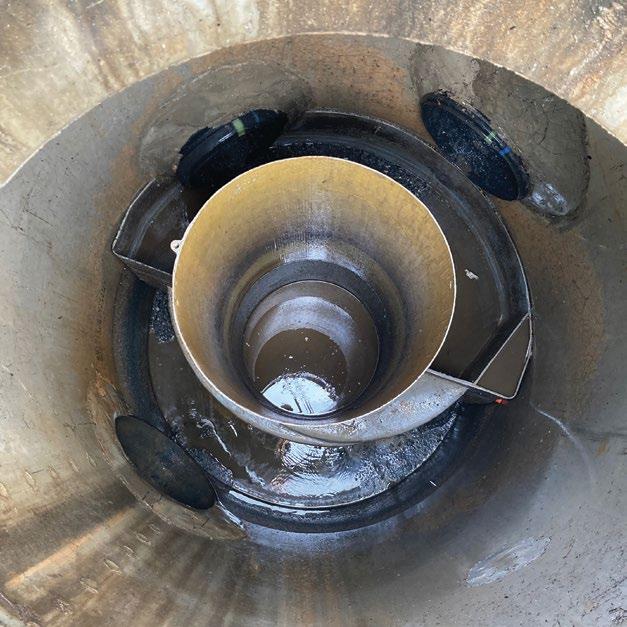
This is a cleaned BMP that captures debris and trash from road pollution and drainage, keeping it out of our waterways.
Civil Engineer Epiphany VandeBogart, P.E., oversees LWR’s Outfall Rehabilitation Program, which prioritizes the repairs and improvements to stormwater outfalls in the city, including more than 300 in need of repair.
The Stormwater Division collaborates with our collections systems team on the cleaning of storm pipes and underground BMPs.



FY 2024 ANNUAL REPORT

Prillaman & Pace crew members install a new waterline on Seabury Avenue as part of the Seabury-Hughes Utility Improvement Project.

1,100+
That’s how many miles of water infrastructure we maintain — 478 miles of waterlines, 455 miles of sewer lines, and 183 miles of stormwater pipes. That’s equal to the distance from Lynchburg to Dallas.
3.3 miles of
4.3 miles of sewer pipes lined
LWR’s civil engineers plan, design, and manage critical infrastructure projects and see that work from the beginning until the infrastructure is put in the ground. Combined, there is more than 100 years of engineering experience at LWR.
The final phase of the Blue Ridge Farms neighborhood utility improvement project is complete. Phase IV included over a mile of water main replacement, plus rehabilitation and replacement of sanitary sewer and stormwater pipes. New sidewalks were installed, and impacted roads were repaved.

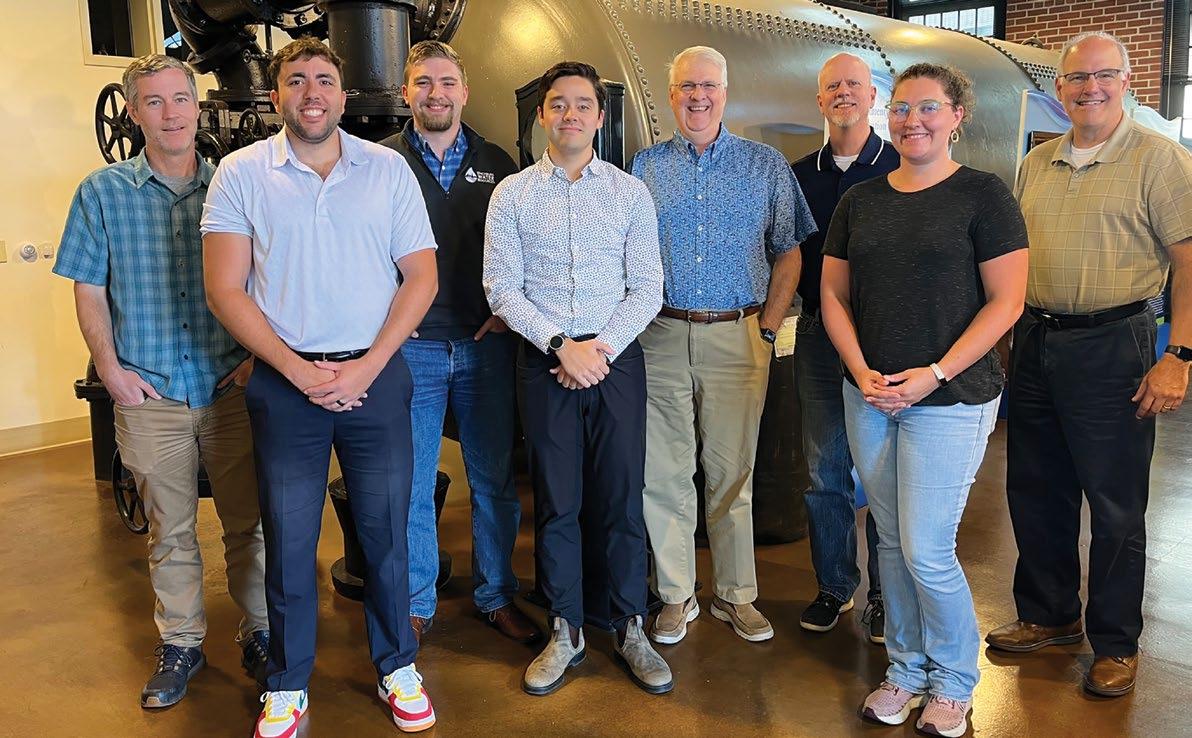
Started in October 2023, this project is bringing significant utility improvements to Lynchburg’s Fairview Heights neighborhood, including the replacement of more than a mile of waterlines, 870 feet of sanitary sewer lines, and the addition of 12 new stormwater inlets.

Here’s a look at some other water utility projects in FY 2024:
• Polk/15th Street waterline replacement
• Morgan Street waterline replacement
• Harrison Street waterline replacement
• Pierce Street CSO Separation
EMPLOYEE SPOTLIGHT
Greg oversees LWR’s three Construction Coordinators and works closely with the Engineering staff and outside contractors to manage critical infrastructure projects for the city. At any given time, LWR’s construction team is juggling dozens of complex projects simultaneously.

“I particularly enjoy working with our staff and the entire LWR team to replace deteriorated and obsolete infrastructure with new, innovative infrastructure that will serve the city and its residents for many years to come. It’s rewarding to see a project completed that may have been years in the undertaking, to visualize the improvements and say, ‘I was a part of that process.’”
COLLEGE LAKE DAM REMOVAL & STREAM RESTORATION


Migrating fish are happy fish. LWR’s Stormwater Division gathered at College Lake Dam in March 2024 to recognize what the dam’s removal means for area fish, now free to migrate up and down Blackwater Creek. The team posed with “Happy Fish,” a smiling fish statue that travels the world to raise awareness about fish migration and highlight projects that remove aging and unsafe dams.
With the breaching of College Lake Dam complete, Blackwater Creek flows freely again
Learn more about this project at www.college lakedam removal.org
At 3:50 p.m., on May 23, 2024, the waters of Blackwater Creek gently overtook the last remaining piece of College Lake Dam after a four-day breaching operation, reconnecting the upstream and downstream flow of the creek for the first time in 90 years. The removal of the high-hazard dam came after years of careful planning and preparation, including the construction of a new Lakeside Drive bridge and measures to control the sediment that had accumulated in the lakebed over several decades. With the breaching of the dam complete, the project’s focus has shifted to stream and wetland restoration in the former lakebed, which includes building a new stream channel through which Blackwater Creek will flow, stabilizing the floodplain area, and creating new wetlands to support a thriving ecosystem.
FY 2024 ANNUAL REPORT
24/7
Lynchburg Water Resources provides its customers with a 24/7 hotline to report water emergencies and signs of pollution in our waterways. Our phones are answered day, night, weekends, and holidays. Just call 434-455-4250.
Whether it’s a water emergency that requires immediate attention, a new water or sewer service request that needs scheduled, or an upcoming utility project that needs to be communicated with citizens, LWR aims to promote a customer-centered culture that ensures a timely and appropriate response. In FY 2024, LWR’s customer service team promptly responded to more than 2,000 customer requests. LWR’s public relations and communications team increased its public outreach, providing neighborhood handouts ahead of major projects and increasing its social media outreach by alerting the community about utility work that could impact water service or traffic flow.
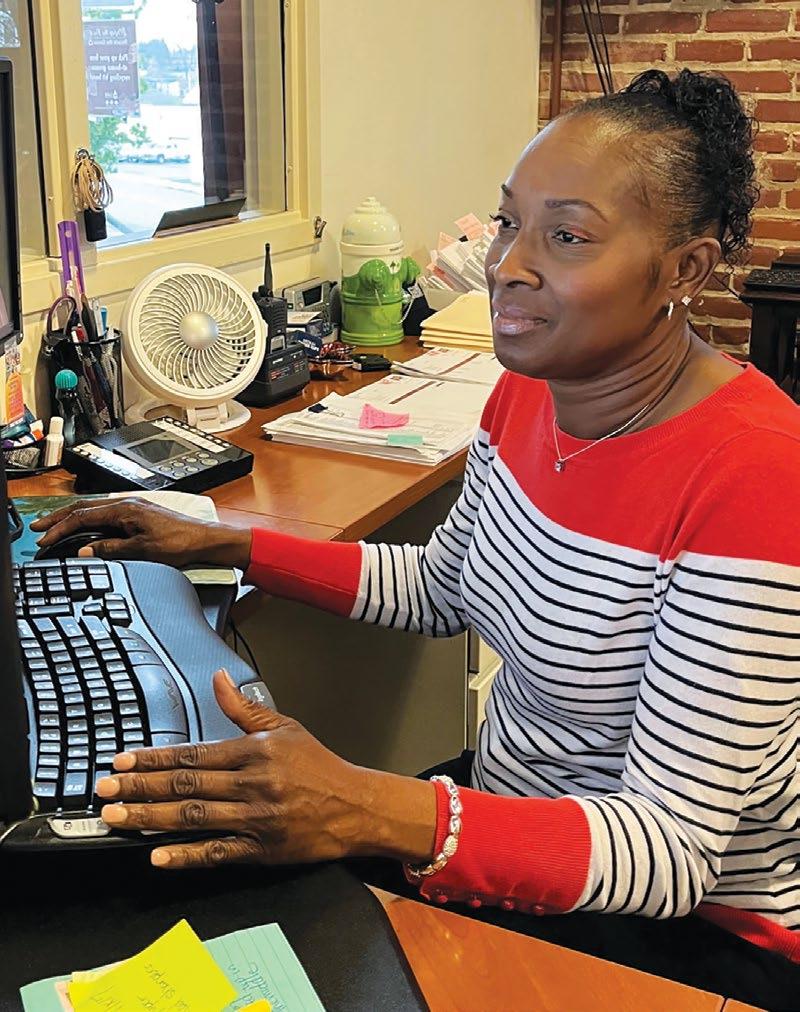
2,166
EMPLOYEE SPOTLIGHT

Sceauncia Parr
CUSTOMER SERVICE REPRESENTATIVE
Sceauncia answers multiple phone lines, helps customers with their questions/concerns, creates work requests and orders, dispatches crews to investigate issues, and handles many internal duties, too.
“I enjoy the fast pace, juggling multiple things at one time, the unpredictability, the daily learning and the surprises of what each day will bring. There’s never a dull moment for me.”


Cellular read meters helping customers watch their water use
LWR and contractor Bitter Creek continue their house-byhouse installation of cellular read meters, providing more Lynchburg residents with access to EyeOnWater, an app that tracks water use and can alert customers of a potential leak in their system. In FY 2024, 5,255 cellular read meters were installed and 298 customers signed up for EyeOnWater.
LEARN MORE ABOUT CELLULAR READ METERS AND EYEONWATER
Total number of customer requests responded to by LWR staff
67
Social media posts alerting citizens of utility work or emergencies
46,711
Citizens reached through social posts about utility work or emergencies
2024 ANNUAL REPORT
LWR’s utility line crews respond to water emergencies no matter the weather conditions or time of day — and stay until the job is done
In January 2024 alone, LWR’s utility line crews responded to and repaired 13 water main breaks across the city while working through below-freezing temperatures. On-call 24/7, our crews also install new water and sewer connections, install and replace fire hydrants, repair sewer/storm lines, and more to keep Lynchburg’s water flowing. Some FY 2024 numbers:

EMPLOYEE SPOTLIGHT

John Fulghum UTILITY LINE CREW LEADER
John has been with Water Resources for 11 years and leads a utility line crew responsible for the maintenance and repair of the city’s water, sewer, and stormwater infrastructure.
“I love teaching people how to do water, sewer, and storm so they can carry on in the lifelearning of a trade that is very valuable in the world. Our job is to make sure all the water and sewer and storm is flowing every day for residents of Lynchburg.”
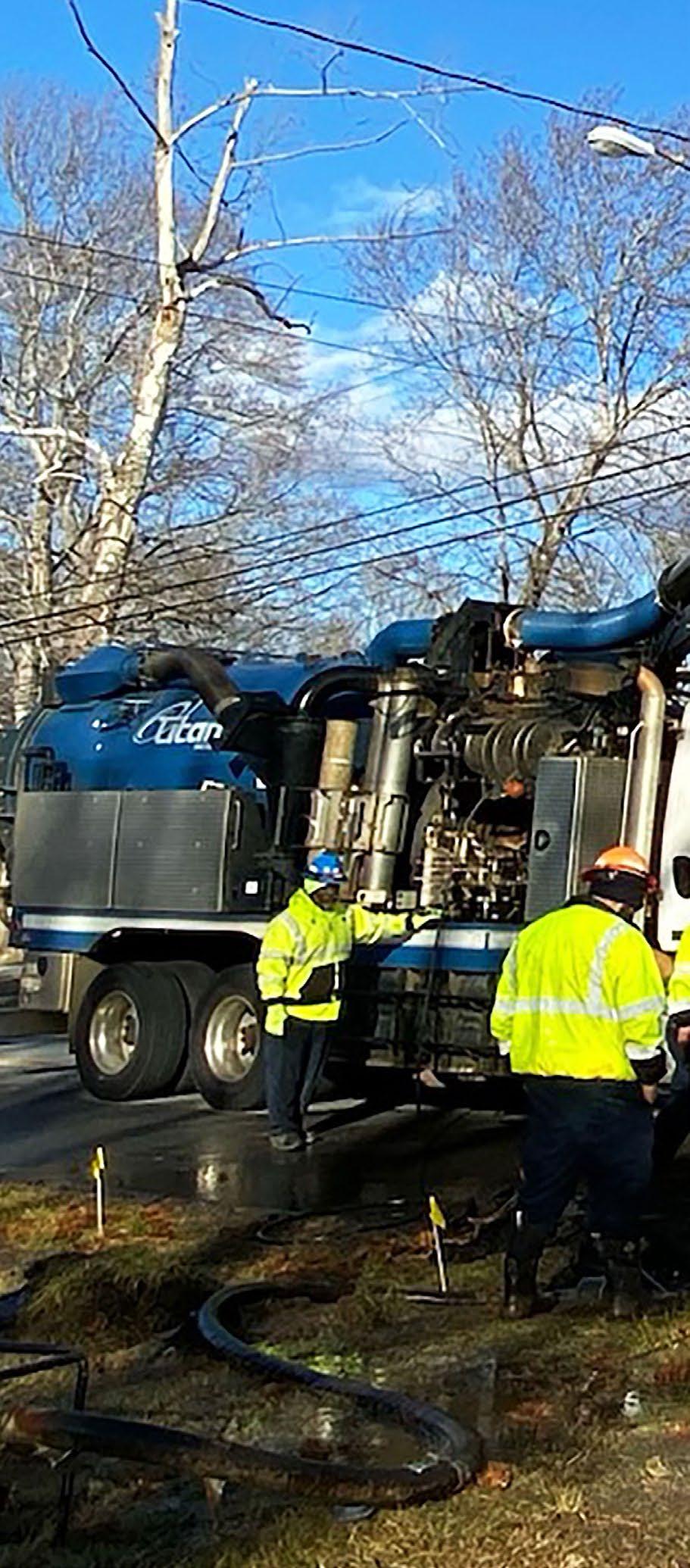



LWR’s CCTV and VacCon crews do the critical work of inspecting and cleaning Lynchburg’s sewer and storm lines. These crews are in the field every day, locating breaks and blockages that, if undetected, can result in sewer overflows and backups. Our VacCon crews assist with main breaks, clear storm inlets and facilities, and clean our sewer lines.


Construction of the College Hill plant’s lower lot and facilities was completed in June 2024, allowing utility line crews, along with their trucks, equipment, and construction materials to return to College Hill after multiple years at the Water Resource Recovery Facility.
Anthony Diego (left) and Colby Layne, VacCon truck operators, were recognized for their courageous service after they acted swiftly when coming across a vehicle fire on the Lynchburg Expressway. The two utility line technicians quickly and safely put the blaze out using the water from the VacCon truck they were driving.
FY 2024 ANNUAL REPORT

LWR’s Safety Division takes a proactive approach to encouraging safety in the workplace and in the field, conducting and facilitating safety trainings for all employees in the department and promoting a culture of safety across all divisions.
0 Number of lost-time accidents at LWR in 2023.
The Safety team, consisting of a manager and two specialists, offer training opportunities on dozens of different topics, including how to properly handle hazardous materials, how to safely work in confined space, how to prevent slips, trips, and falls, and more. Every new employee starts their employment with new-hire safety training, setting the tone early for safe work practices. In FY 2024, the Safety Division implemented a new program called, “7-Minute Safety Trainer,” which consists of quick, online training sessions required of all employees. The Safety team holds weekly meetings with utility line crews and is out in the field daily, helping to ensure crews stay safe on the job.

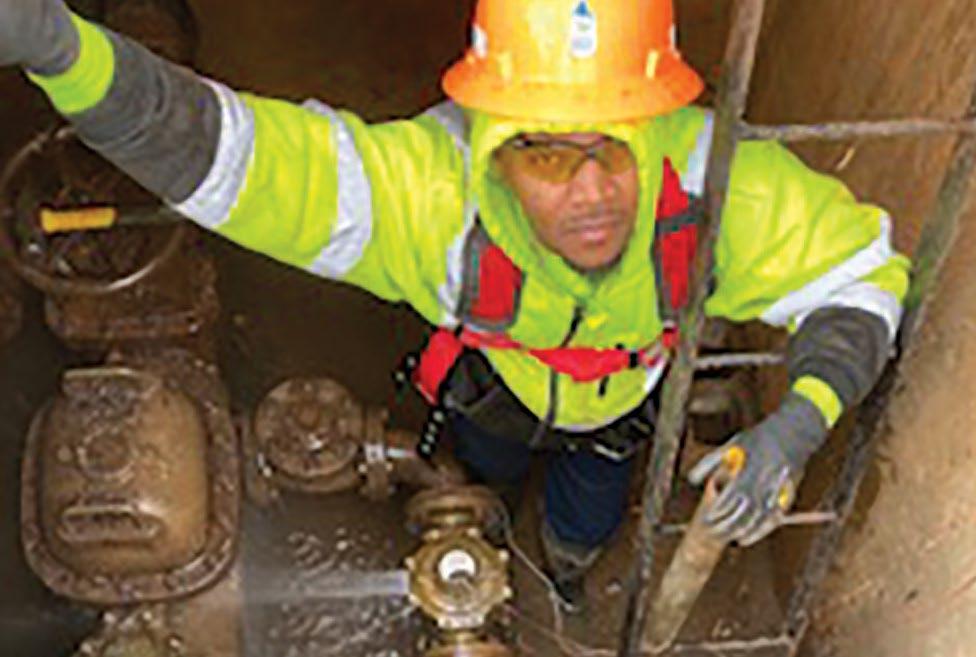
The Meters Division continues its conversion to cellular read meters and the EyeOnWater app that allows customers to track their water usage and be alerted more quickly to any potential leak in their water system. The Meters team, consisting of a manager and six meter readers and mechanics, installed 5,255 cellular meters in FY 2024. That’s on top of the 24,000+ meters that they read monthly, including 13,187 cellular reads and 11,388 drive-by reads. The team completed 9,813 work orders in FY 2024, which includes installations for new services, investigations of high or low customer water usage, and turning water service on and off as requested.

FY 2024 DATA DROP
24,575
Number of meters read monthly
8,267 Meter audits conducted
37 Confined space entries for meter vault work
297 New connections/ installations
The Technical Services Division, consisting of a team of four, works with almost all divisions of LWR, handling the department’s GIS mapping, work management, and backflow compliance across the city. In FY 2024, the division converted its GIS mapping from the Geometric network in ESRI desktop to the new ESRI utility network in ArcPro, giving LWR a better editing process, tracing capabilities for sewer and storm systems, and the ability to do red-line drawings in the field for map corrections. LWR is one of just a few utilities to complete this conversion and one of the first to combine sewer and storm lines for better tracing in one feature class. On backflow compliance, LWR coordinates with 206 testers and 288 testing firms for the installation and testing of backflow devices, ensuring that 4,061 backflow devices in the city are in compliance. Overall, the division tracks almost 1,100 miles of water/sewer/storm lines, 15,091 manholes, 10,329 valves, and 3,274 fire hydrants.
EMPLOYEE SPOTLIGHT
Kathleen Finan GIS ANALYST II
Kathleen maps the water, sewer, and storm infrastructure for the city, reviewing as-builts and map corrections for accuracy, then digitizes those changes into the city’s maps.
LWR believes employees are the department’s most important resource and has set the goal of recruiting, developing and retaining a highly qualified, diverse, and high-performing workforce. Again in FY 2024, employees were encouraged to take advantage of opportunities for professional development and growth, including participation in conferences and trainings. More than 20 employees have been with the department for 20+ years, making the development of future leaders critical. To improve employee satisfaction, appreciation events were held throughout the year to thank employees for their contributions, including a Trunk-or-Treat event for employees and their families, a holiday potluck, and employee scavenger hunt.
EMPLOYEES’ YEARS OF SERVICE

“It is important to me that GIS be as up to date as it can be so that not only our employees but the rest of the city can use the maps to help them in their jobs as well. I like being able to help citizens with questions and even pass a little bit of history about our system to citizens who are curious.”
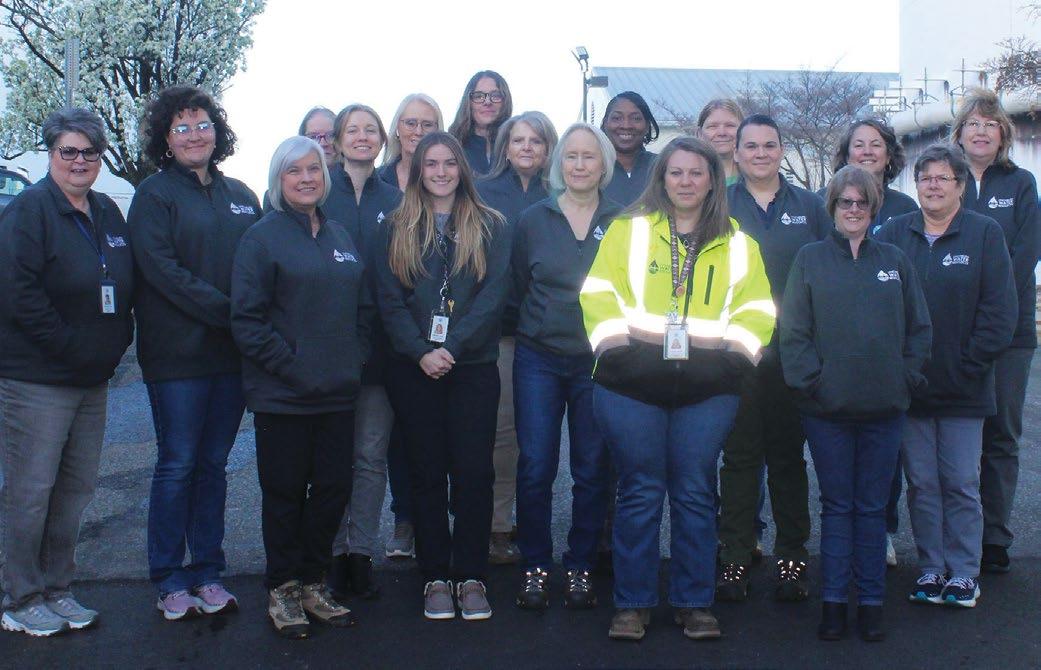
Women work in all areas of LWR, from positions of leadership to key roles in the delivery of essential services. Their titles include: water quality manager, water operator, chemist, stormwater engineer, lab manager, construction coordinator, property specialist, warehouse manager, meter supervisor, utility line tech, outreach coordinator, communications specialist, stormwater technician, GIS analyst, customer service rep, among others.
(Not everyone pictured)
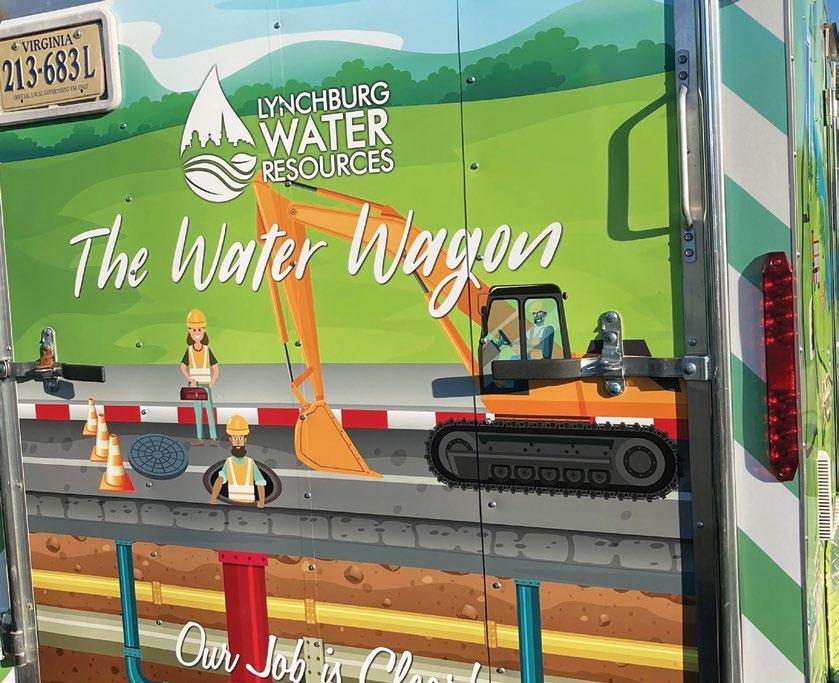
Hitting Lynchburg’s streets in FY 2024, The Water Wagon is a mobile educational water program available for schools, community events, and sporting events. The artwork on the trailer is used to teach about the water cycle, stormwater runoff, and underground water infrastructure. It also includes a scavenger hunt for kids (and adults).

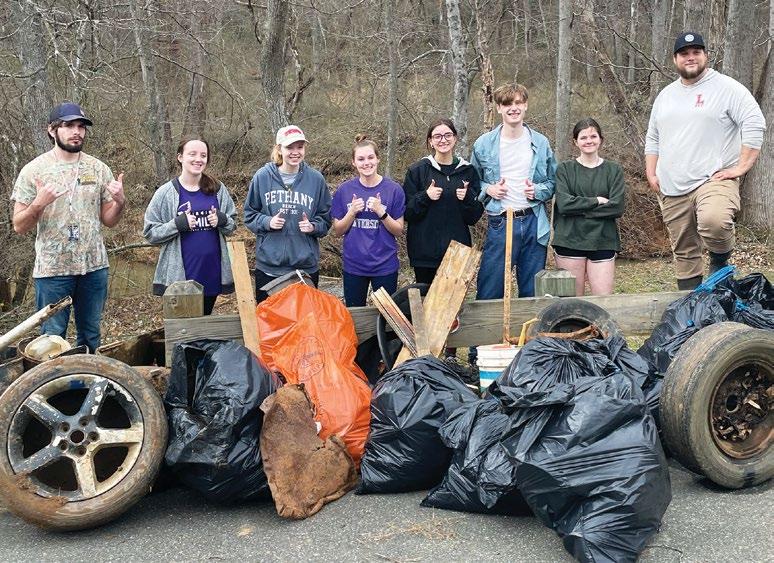
FY 2024 ANNUAL REPORT
Lynchburg Water Resources’ vision of “Clean Water. Clear Streams. Thriving Community.” is only achievable if citizens and the larger community know how they can help. LWR’s Outreach and Communications team works to create materials and campaigns to educate the community about environmental stewardship and sustainability. Outreach efforts include stream cleanups, rain barrel workshops, student field trips, treatment plant tours, volunteer and internship opportunities, and social media campaigns that engage citizens and encourage them to be active participants in the protection of our water resources. In FY 2024, there were 353 community volunteers who participated in LWR outreach events, including cleanups, rain barrel workshops, and citizen science monitoring.
First-place honors at WaterJAM 2023, VA AWWA’s annual conference: Social Media: Easter 2023 water main break in Downtown Lynchburg Water Awareness & Education: WaterWorks Summer Camp, where students constructed a model of Lynchburg’s water system
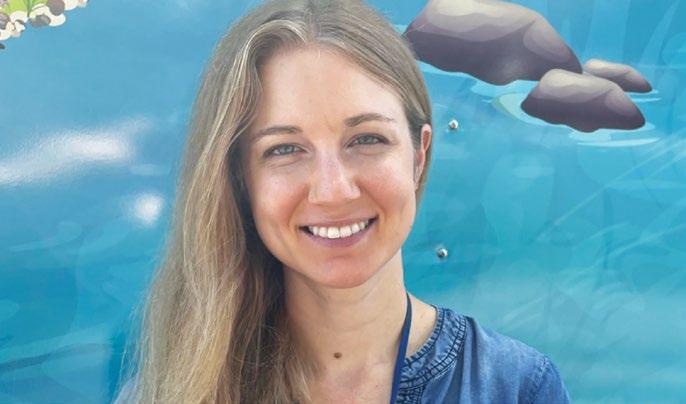
OUTREACH COORDINATOR — STORMWATER
Morgan works to inform and empower the people of Lynchburg to keep their waterways free of pollution. Through outreach programs such as school lessons, speaking at community events, and information campaigns, she educates the community about our stormwater system and impacts on the James River.
“As a science communicator, I am able to build community and educate others on our precious water resources — and hopefully inspire them to be good stewards of our planet!”
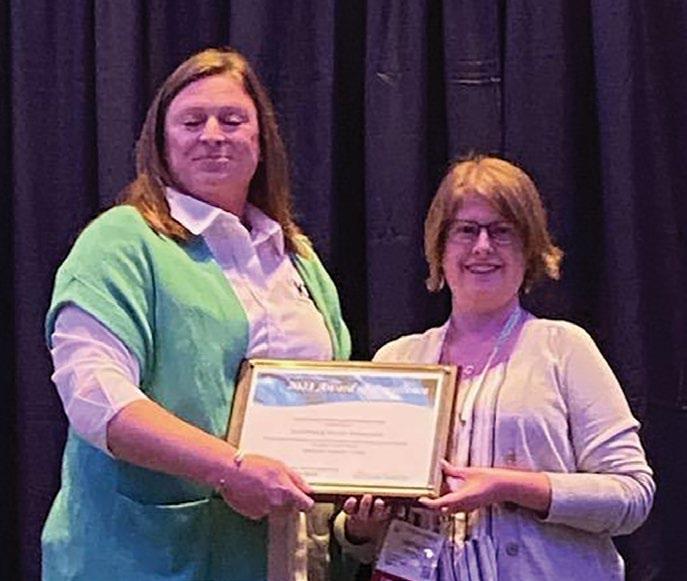
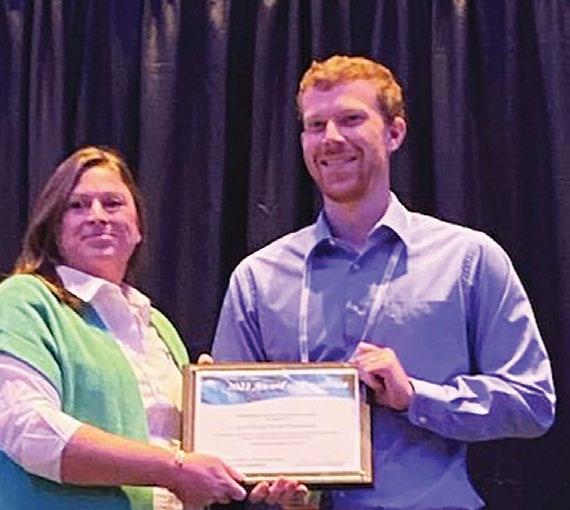

Our Outreach and Communications team launched a quarterly email newsletter to keep Lynchburg informed about LWR’s projects, initiatives, and educational outreach campaigns. Click here to subscribe.
8,516
Total number of people LWR’s Outreach and Communications team reached in person with water-related information in FY 2024.
373
Gallons of Grease Collected
Part of campaign to keep fats, oils, and grease out of our sewer pipes.
42
Total number of tours given at our College Hill Water Treat ment Plant and WRRF, totaling 495 people.

3,042
Number of school students reached in schools, at camps, and through tours.

LWR has a new logo! Revealed in April 2024, the new logo aligns more closely with our City’s new logo and colors while keeping all of the symbols that represent our vision of “Clean Water. Clear Streams. Thriving Community.”
FY 2024 ANNUAL REPORT
A Lynchburg citizen can buy a 16.9 ounce bottled water for an average cost of about 20 cents per bottle.
They can fill that bottle with Lynchburg tap water 344 times for the same price. - or -
FY 2024 OPERATING FUNDS
FY 2025 (ADOPTED)

Click here to view the full City of Lynchburg adopted budget for FY 2025. Water Resources’ three funds start at page 215 of the budget.
How Lynchburg compared to the state average, other localities:

VIRGINIA LOCALITIES

LYHBeyond: The Blackwater CSO Tunnel project has begun with construction underway on 7th Street.
* These numbers are based on the combined cost of water and sewer at 5,000 gallons/month. The average Lynchburg residence uses 3,700 gallons/month.
Here are some key projects and initiatives already underway in the new fiscal year.
LYHBeyond: The Blackwater CSO Tunnel Project is the largest capital improvement project in Lynchburg’s history and will be the most impactful to date in protecting our cherished waterways. It’s the capstone project for the City’s 40-plus-year CSO Program that will construct a nearly mile-long, 12-foot diameter tunnel beneath the Blackwater Creek to capture excess wastewater and stormwater. Learn more at www.LYHBeyond.org.

The Downtown Renewal: Main Street East Project is the fourth phase of the City’s investment to upgrade downtown’s aging utility infrastructure, focusing on the section of Main Street between 12th Street and the Expressway. Learn more at www.renewlyh.com
The Richland Hills Sewer Extension Project will bring sewer access to more than 250 residents in the neighborhood currently served by aging septic systems. LWR also launched a new Septic-to-Sewer program to help citizens save money on the cost to connect. Learn more at www.lynchburgva.com/richland-hills
The Water Service Line Inventory Program enters its next phase as LWR provides citizens with information about the pipes that deliver their drinking water. The federally mandated program aims to find and replace lead service lines, and LWR is seeking citizens’ help to identify any remaining lead pipes in the system. Learn more at www.lynchburgva.gov/waterserviceline.
Director
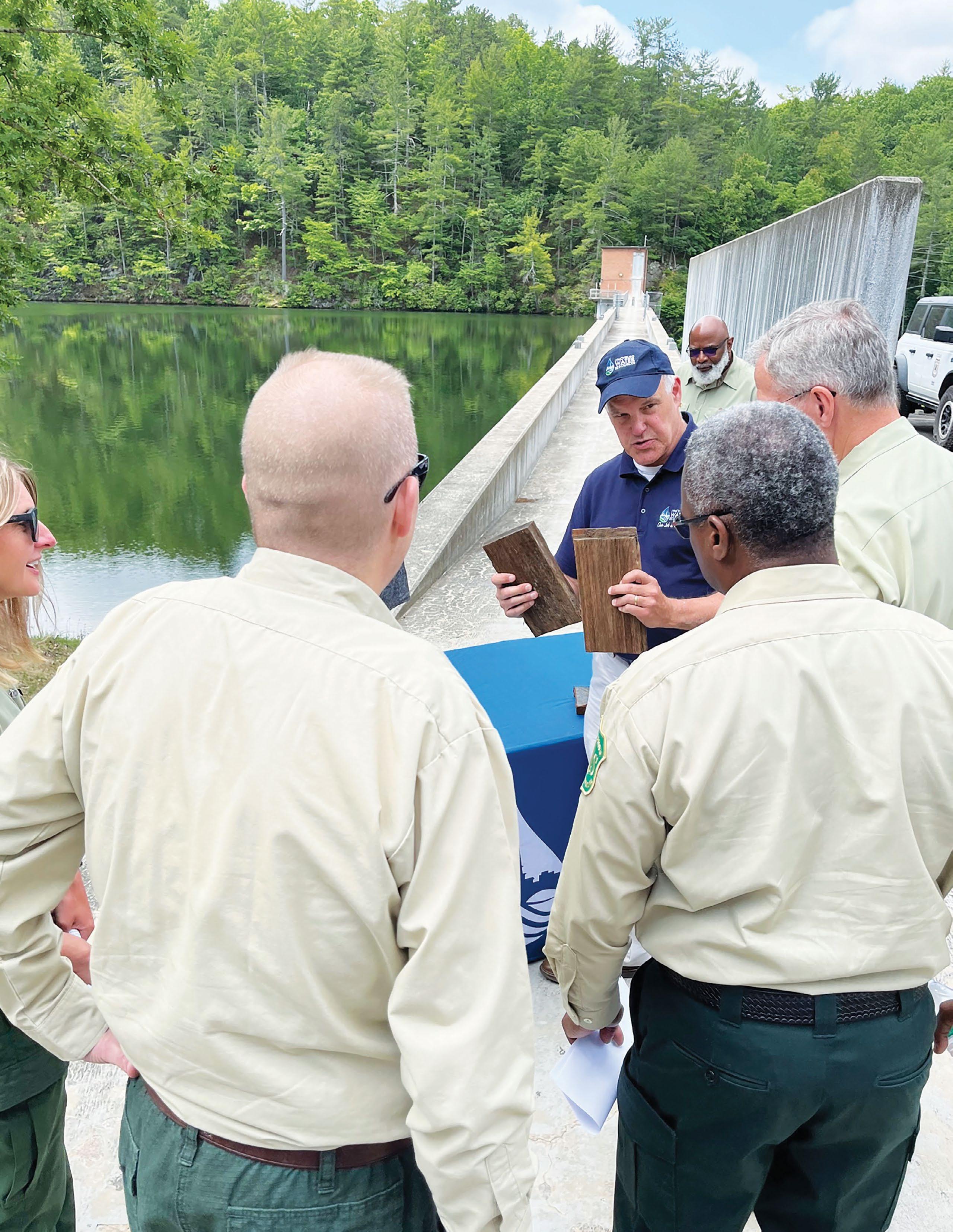
pieces
Clean Water. Clear Streams. Thriving Community.
525
Phone: 434-455-4250
Website: www.lynchburgva.gov/waterresources



@LynchburgH2O
